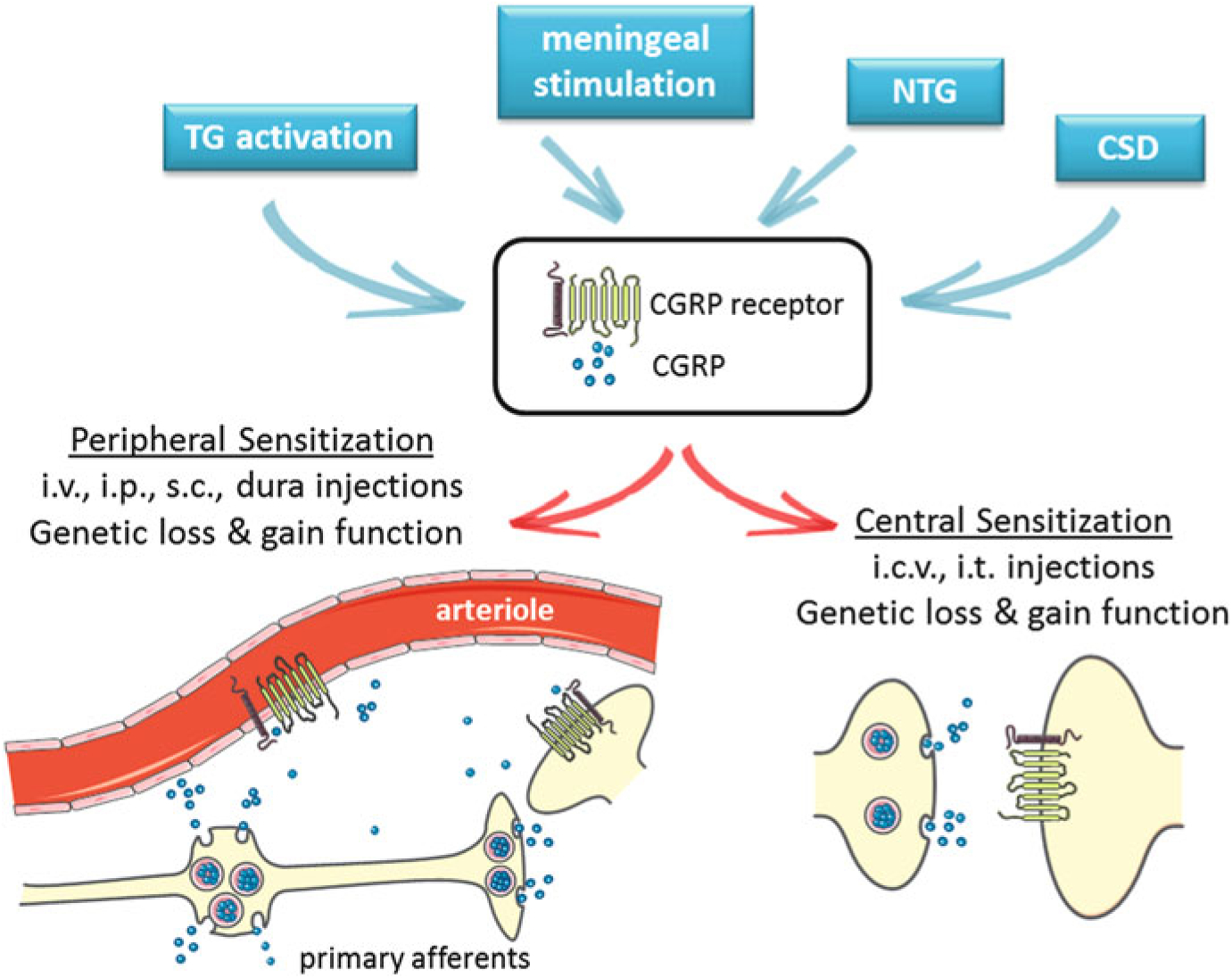Fig. 1.

CGRP in animal models of migraine. Animal models of migraine induced by activation of the trigeminal ganglia (TG), meningeal stimulation, infusion of nitroglycerin (NTG), or cortical spreading depression (CSD) have been shown to involve CGRP and its receptor. A schematic of the calcitonin-like receptor and RAMP1 complex is shown on vessels and neurons. Not shown are CGRP receptors on other cells, including mast cells and glia. While the exact sites and actions of CGRP that are important for migraine are not known, evidence from animal models suggests there are both peripheral and central sensitization mechanisms. Likewise, administration of CGRP by peripheral and central routes is believed to induce migraine-like phenotypes through these sensitization mechanisms. Peripheral delivery routes include intravenous (i.v.), intraperitoneal (i.p.), subcutaneous (s.c.), and directly onto the dura. Central delivery includes intracerebroventricular (i.c.v.) and intrathecal (i.t.) routes. Genetic models involving loss or gain of CGRP and/or receptor subunits can also modulate peripheral and central CGRP actions
